Planting and growing a fruit tree guild is a great way to maximize your garden space and provide nutrients and health to your fruit trees at the same time. A fruit tree guild can help with disease resistance, attracting pollinators, and providing the right growing environments for multiple crops at once.
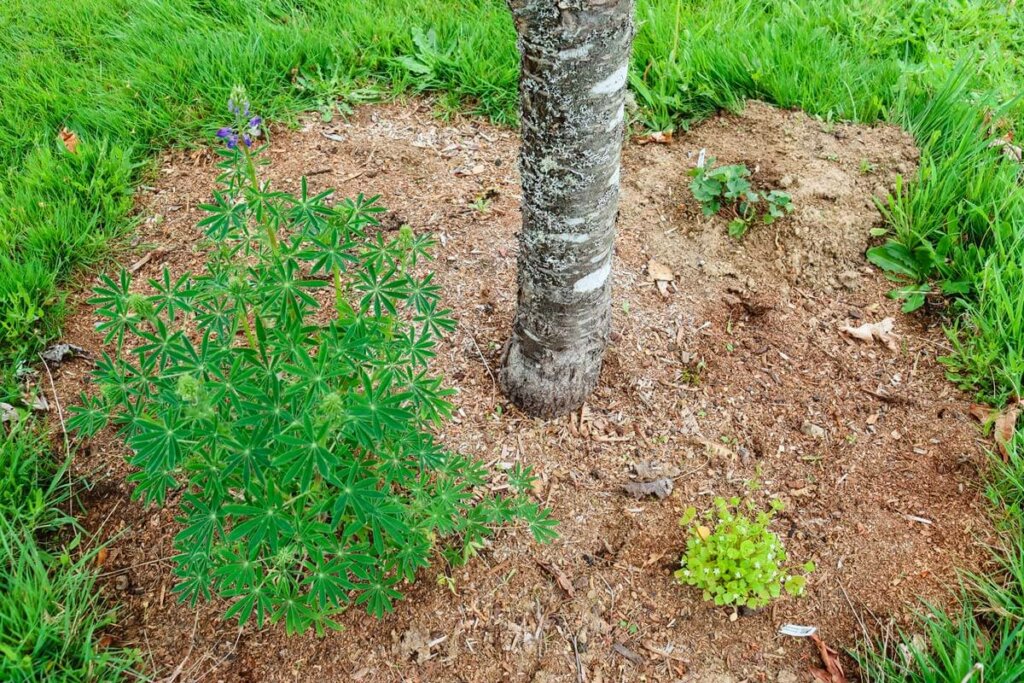
Fruit trees are a great perennial food source, but it is important to know how to properly grow fruit trees to avoid costly mistakes.
Natural Remedies Made Simple
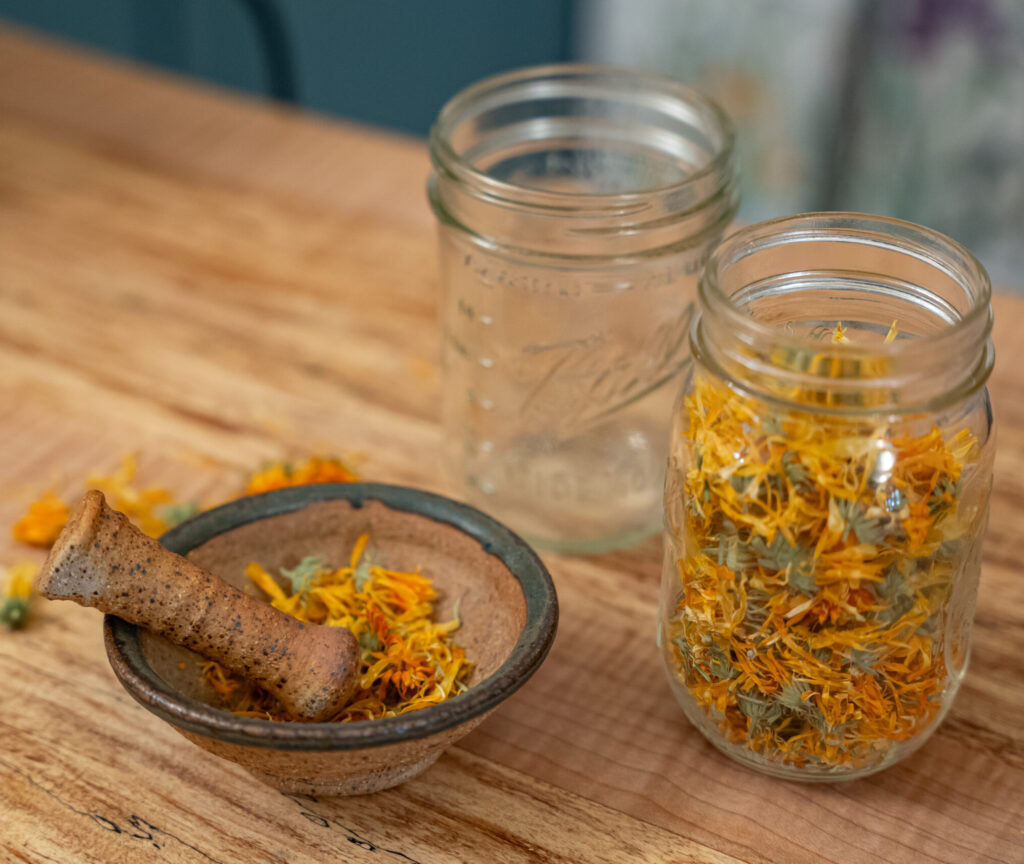
Start your home apothecary with confidence—even if you’re brand new. Learn how to choose the right herbs for your body using the simple principles of herbal energetics.
Discover how warming, cooling, drying, and moistening herbs affect your body—so you can stop guessing and start making remedies that actually work.
Fruit trees do not like to be surrounded by grass because the grass is a very nitrogen-loving plant. This means it will use up all the available nitrogen in the soil and our fruit trees were starting to show signs of nitrogen deficiency.
Unfortunately, in our orchard, grass surrounds all of our fruit trees. A couple of years back, we dug up around the base of all the trees and got rid of the grass, then covered the ground with a thick layer of mulch.
This has helped prevent the grass from encroaching on the trees again and provided weed suppression, but it hasn’t fixed the lack of nitrogen.
A few weeks ago, I interviewed Daron all about creating food forests to grow more in your backyard and improve the health of your trees and other crops.
Today, I’m sharing how I’m creating fruit tree guilds to improve the health of our fruit trees in our orchard, and grow some edible food all at once.
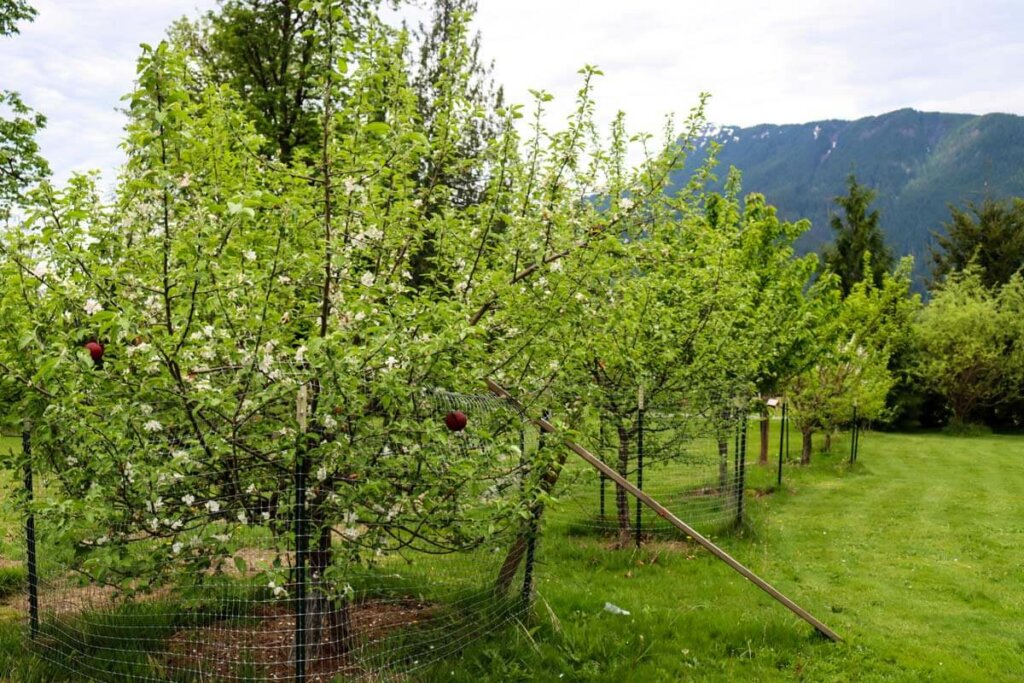
Planting a Fruit Tree Guild
The first step in creating a fruit tree guild, which is just a fancy way of saying a grouping of plants that all work together to benefit each other, is to make sure you know how to properly plant a fruit tree.
In our orchard, we have multiple kinds of fruit trees. In the video above, I’m demonstrating how to plant a fruit guild around our cherry tree.
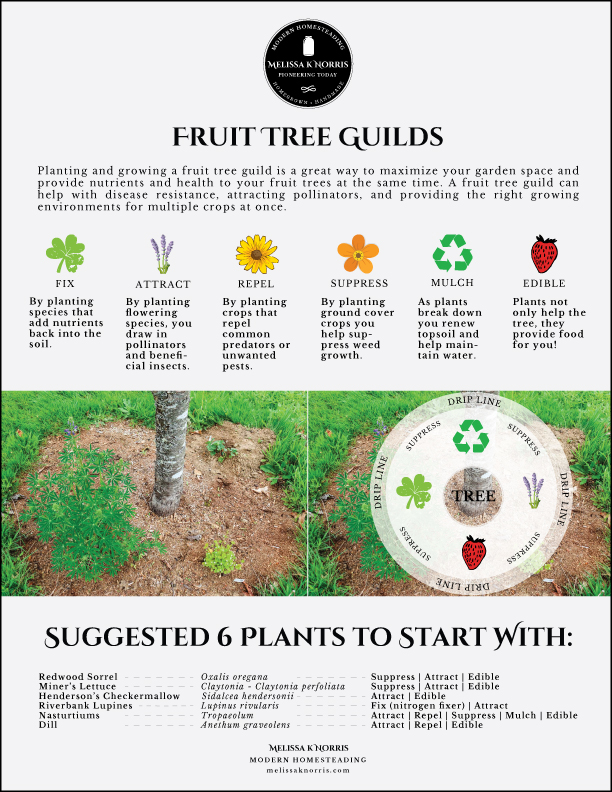
Choosing the Right Plants
When planting a fruit tree guild, there are six kinds of plants to choose from that will each benefit the guild in a different way (many plants fall into more than one category).
- Fixing – helps to fix nutrients into the soil
- Attracting – flowering species draw pollinators in
- Repelling – plants that help repel pests
- Suppressing – helps to suppress weeds
- Mulching – plants break down renewing topsoil and retain moisture
- Edible – you can eat them
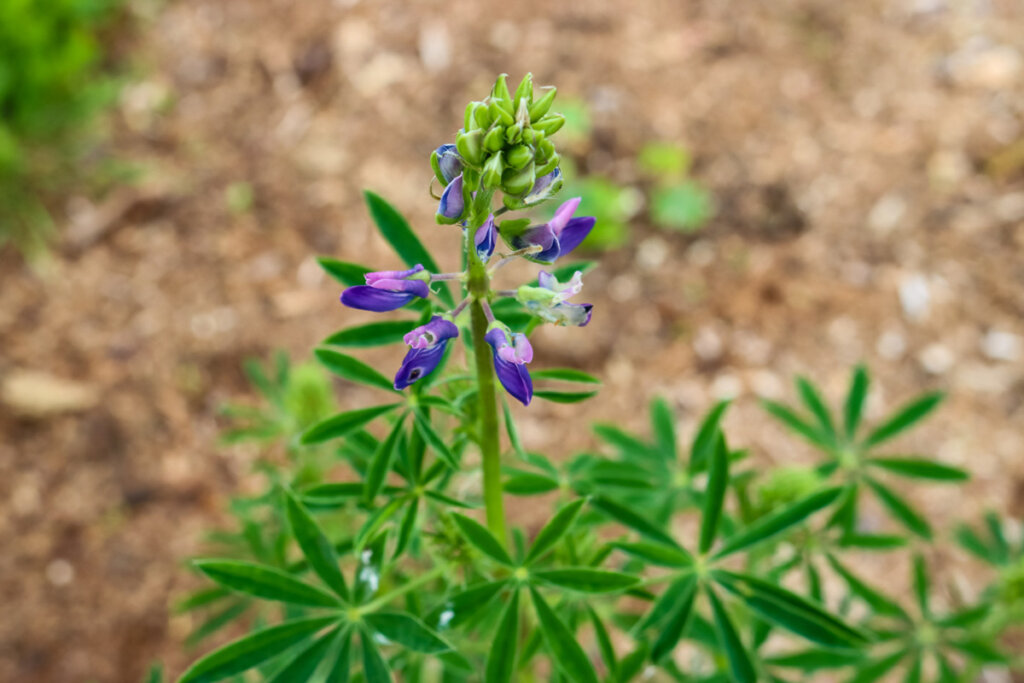
Subscribe to Melissa K. Norris!
Get updates on the latest posts and more from Melissa K. Norris straight to your inbox.
We use your personal data for interest-based advertising, as outlined in our Privacy Notice.
Plants that “Fix”
Fixing plants will help provide nutrients that have been drained in the soil by the tree or surrounding plants.
For example, I planted Lupin around my cherry tree because it’s a nitrogen-fixing plant that also has beautiful blossoms which will help create a pollinator-friendly environment for our fruit trees.
My plan is to let the lupin go to seed each year, then divide out and plant them around the rest of our trees over the years.
Plants that “Attract”
There are many flowering plants that will attract beneficial bugs and insects to the area that can pollinate the trees.
As I mentioned above, the Lupin that I planted will also blossom and attract honey bees that will pollinate the orchard for years to come.
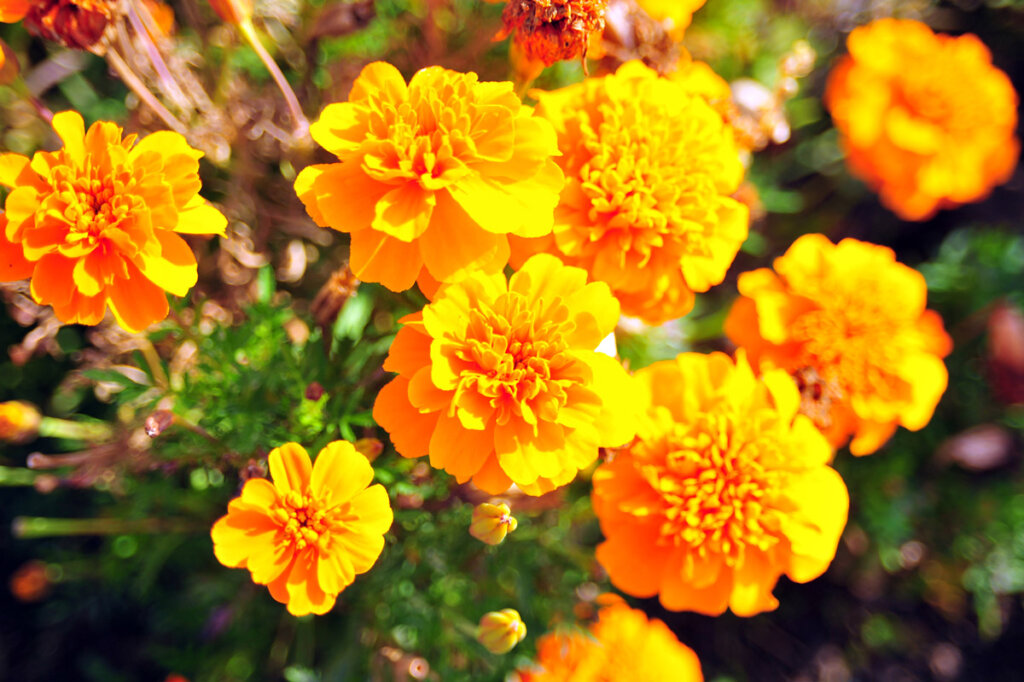
Plants that “Repel”
Just like we want to attract the right kind of bugs, we want to repel the wrong kind of pests. If you have an infestation of a certain kind of insect that tends to do damage to your fruit trees, you can actually plant certain crops that will repel that kind of insect.
This also works for larger animals like deer. Planting something like Marigolds can help deter the deer from munching on immature branches of your fruit trees.
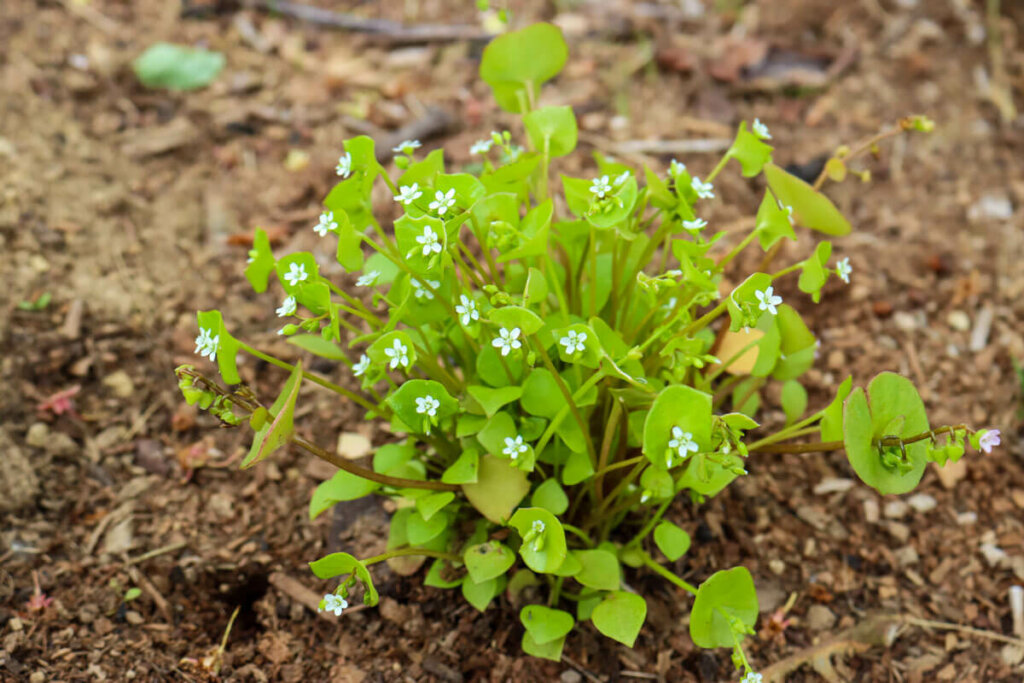
Plants that “Suppress”
When we talk about suppression from plants, the ultimate goal is to keep weeds and other crops we don’t want from growing in. I planted some perennial vegetables like Miner’s Lettuce to act as ground cover to suppress the grass from encroaching back toward the tree.
My goal is to allow the suppressing plants to grow around the perimeter of the guild to keep the grass from growing back. Especially since grass is a nitrogen-loving crop that steals nitrogen from the fruit trees.
The bonus here is that I can eat Miner’s Lettuce and it grows really well in my area. So I’m creating an edible ground cover! What’s great about the miner’s lettuce is that it can grow in shade or sun. Where I planted the lettuce, it will get morning sun but will be shaded by the hot afternoon.
Plants that “Mulch”
As plants grow and die back, they actually leave a natural mulch behind. For certain plants this mulch can also help replenish the soil. Choosing crops that will help create a living mulch will help create a healthy fruit tree guild.
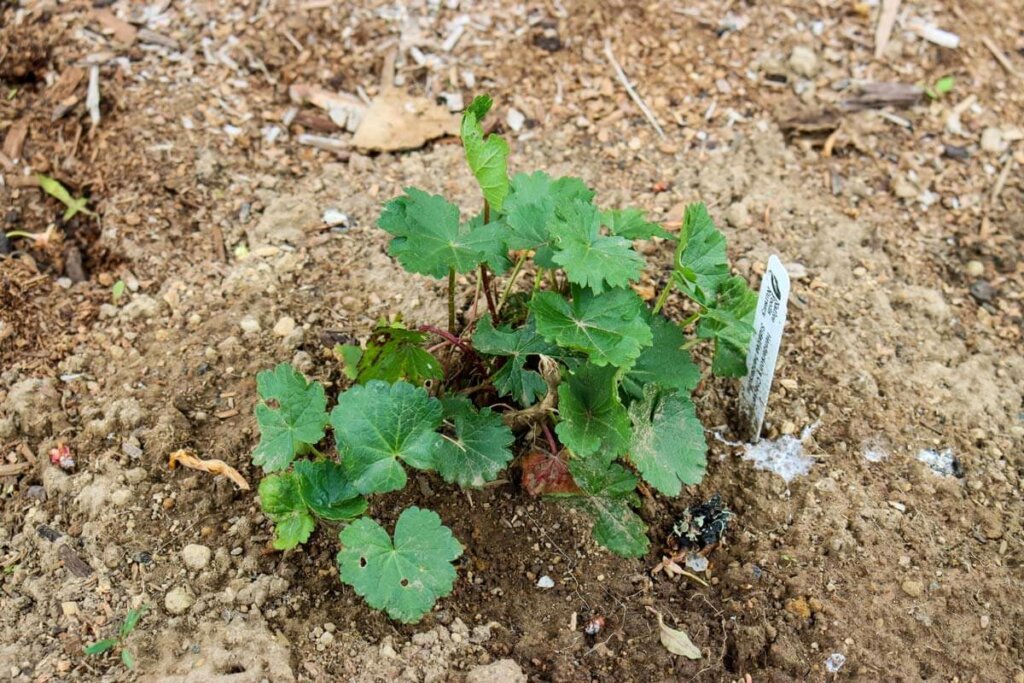
Plants that are “Edible”
This isn’t necessary to create a fruit tree guild, but if I’m planting something in the ground to help my fruit trees grow, it’s just a bonus if that crop also happens to be edible.
It’s been fun this year planting some new things to the property. One that I’m excited about is Henderson’s Checkermallow. You can eat the leaves of this plant all year long, but it also blossoms with pretty flowers in the spring and will help bring in those pollinators.
I love how we can bring in beautiful plants that help give back to the plants around them, but that we can also eat from! Creating food forests and building fruit tree guilds is one of the most exciting gardening experiences.
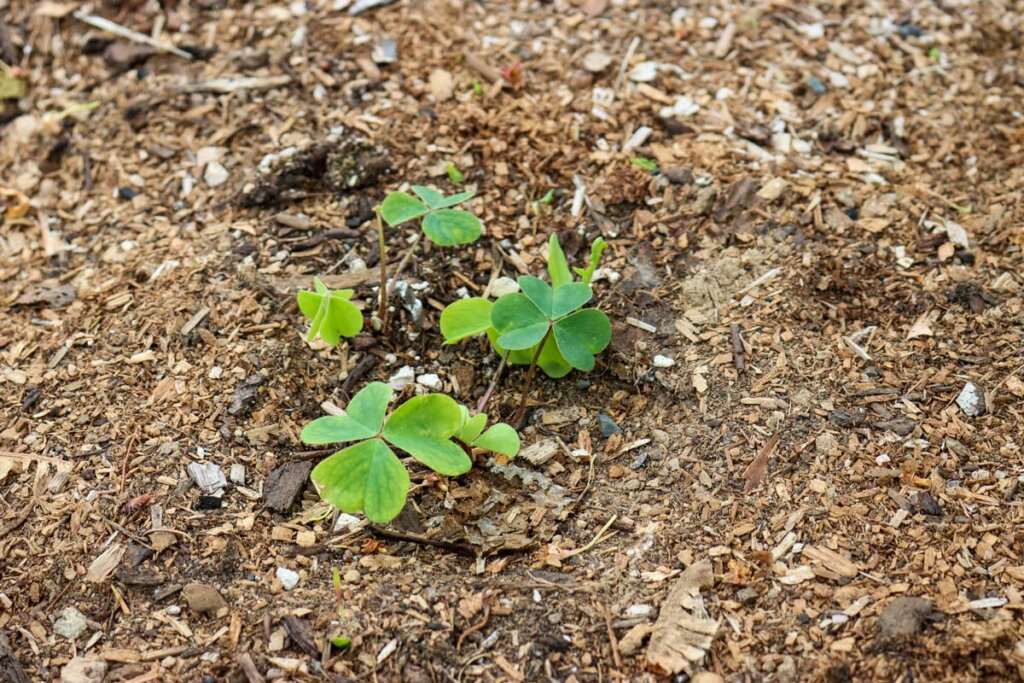
My favorite of all the edibles I planted is Redwood Sorrel – Oxalis oregana. It’s a ground cover and an edible. It’s a bright almost pungent flavor, lemony with an herby undertone. Very delicious!
What plants have you experimented with? I’d love to hear!
More Resources for Growing Fruit Trees:
- 5 Tips to Starting an Orchard and Growing Fruit
- When & How to Plant Fruit Trees
- Growing Fruit Trees in Pots
- How Many Fruit & Berry Plants Per Person to Plant
- How to Prune an Apple Tree in Winter
- How to Treat Fruit Trees Organically: When to Spray for Disease
- How to Care for Fruit Trees in the Fall & Winter
- Orchard Planning to Keep Pests Out (Live Coaching Call)
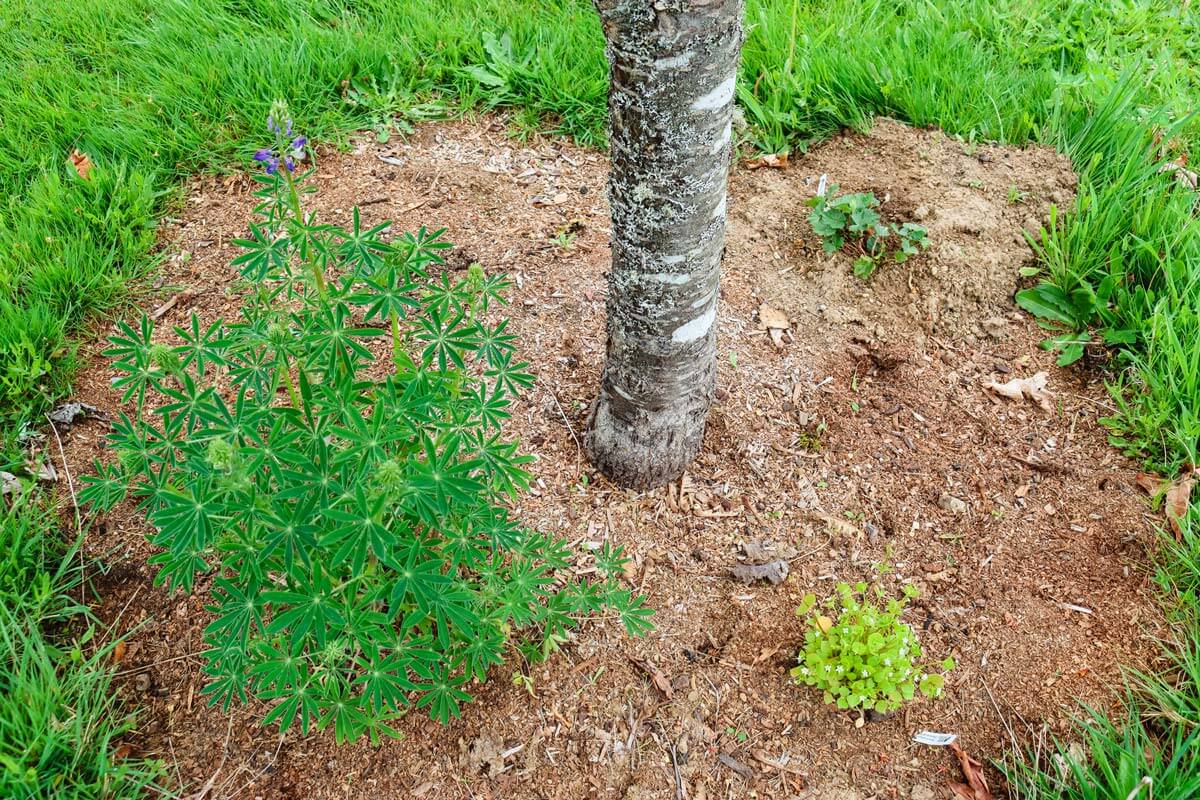

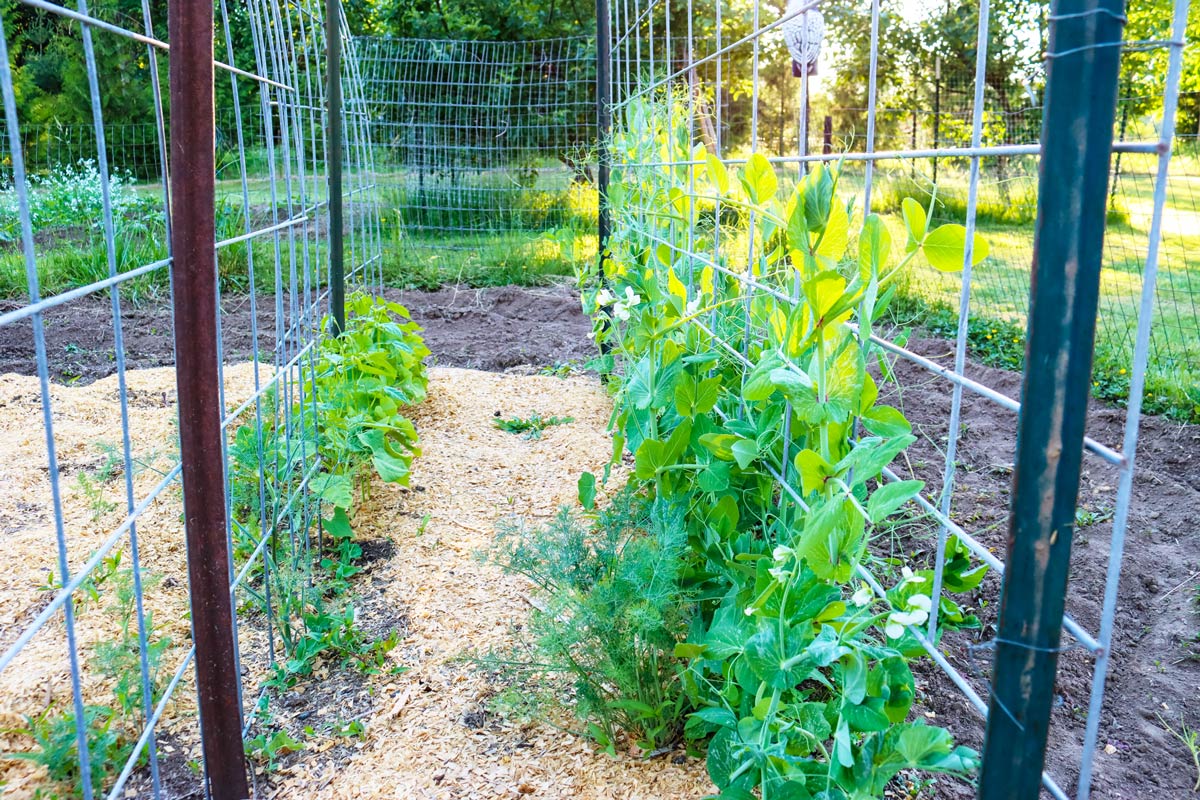
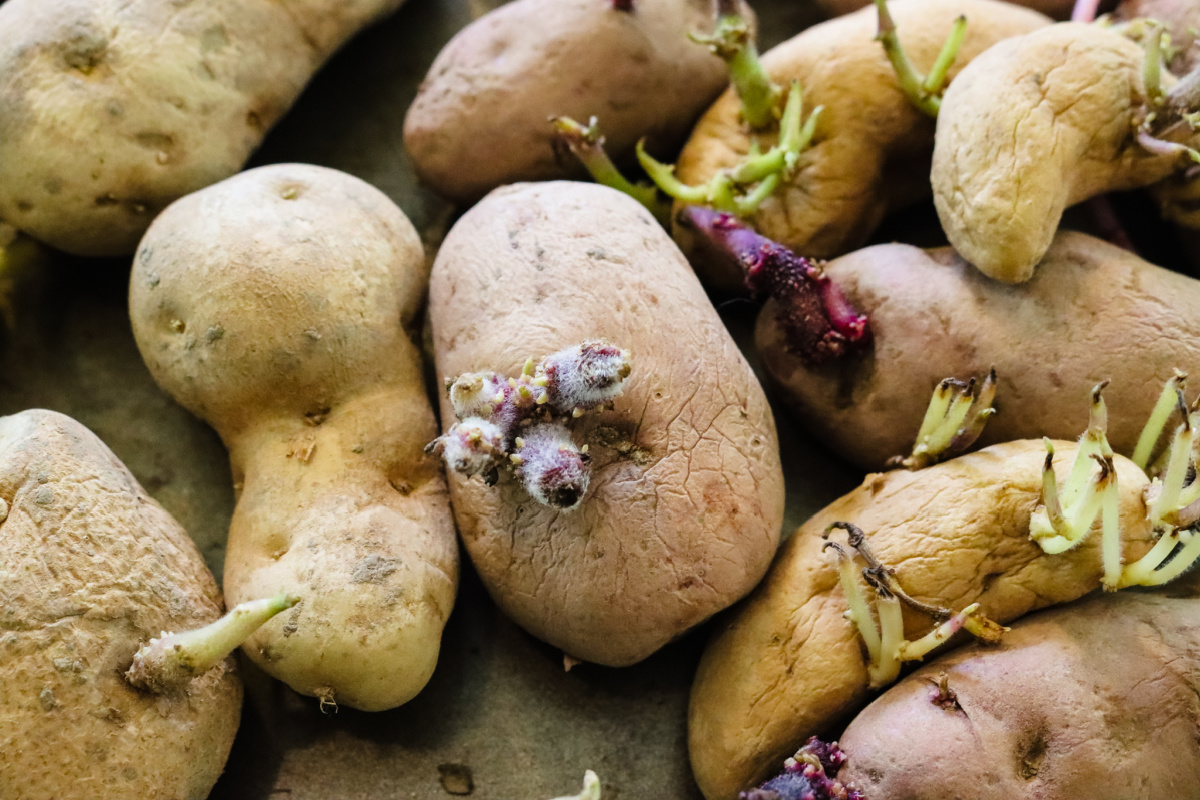







Hello! I am enjoying your posts, especially because I live in the pacific north coast! When talking about the been oil and sprayer, you mention “ This is the name oil and sprayer that I use”, But there is no photo? So I am unsure as to which neem oil and sprayer you use. Am I missing something? Thank you so much for your post. I really enjoy them.
I meant neem oil. Sorry
Great introduction to fruit tree guild! Thanks for including suggestions.
Neem oil is highly toxic to bees and other beneficial pollinators and should not be sprayed or used on plants that bees and pollinators may interact with. I only use it indoors and never outdoors for this reason.
I love this idea for my small orchard! I’ve looked since seeing this article in my area for these plants and can’t find anywhere to purchase them. Do you know of anywhere online to purchase?
Well miners lettuce is also called claytonia I’m pretty sure high mowing seed company sells the seeds. I grew them in the middle of winter in an unheated green house in zone 7a. If I didnt kill it and the constant frosts didn’t then it was a winner. However I don’t know if claytonia would be as aggressive as grass. My claytonia didn’t seem to be
Is there something I can plant that will deter apple maggots?
What plants should I plant around a Lemon tree?
Around my fruit trees I’ve planted comfrey, daffodils (to protect trees against voles and moles), garlic, & strawberries.
Do you just leave the strawberries go, runners and all?
Hello! I am enjoying your posts, especially because I live in the pacific north coast! When talking about the been oil and sprayer, you mention “ This is the name oil and sprayer that I use”, But there is no photo? So I am unsure as to which neem oil and sprayer you use. Am I missing something? Thank you so much for your post. I really enjoy them.
I planted comfrey plants around some of my fruit trees. I cut them back several times a year and use the leaves as a mulch. I also planted a grape vine at the base of our peach tree and so far they seem to be doing very well together!